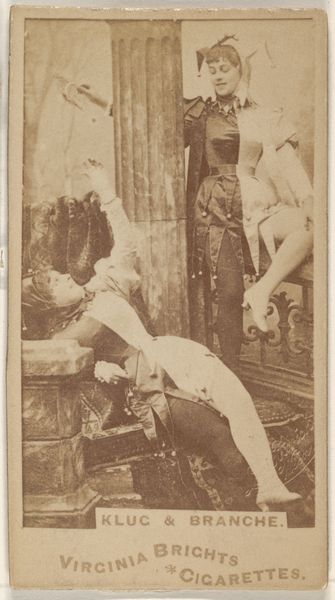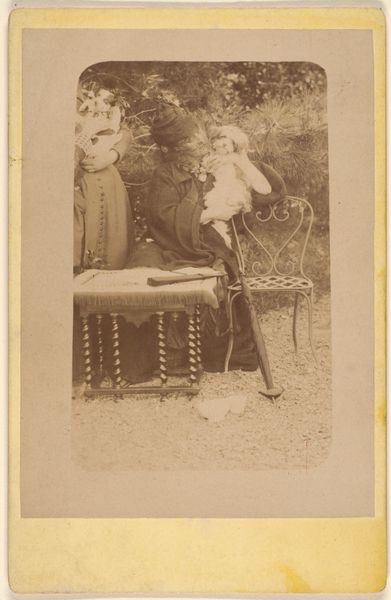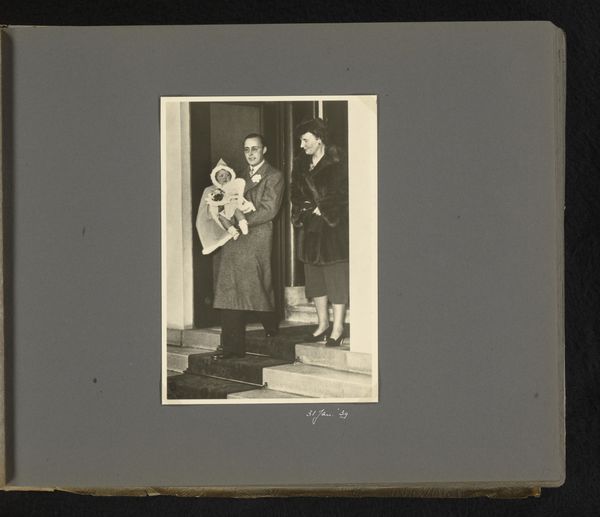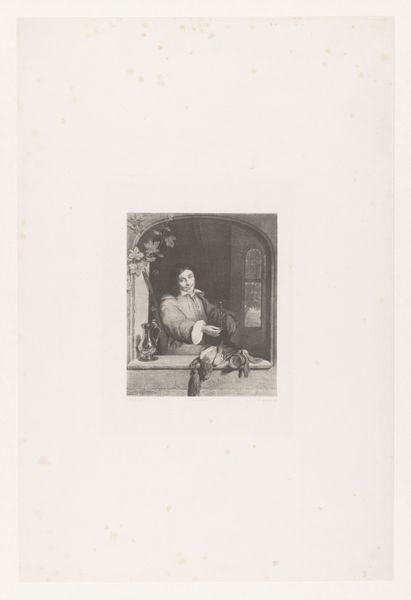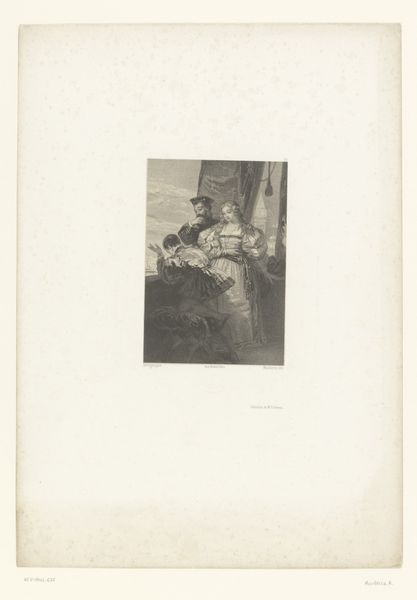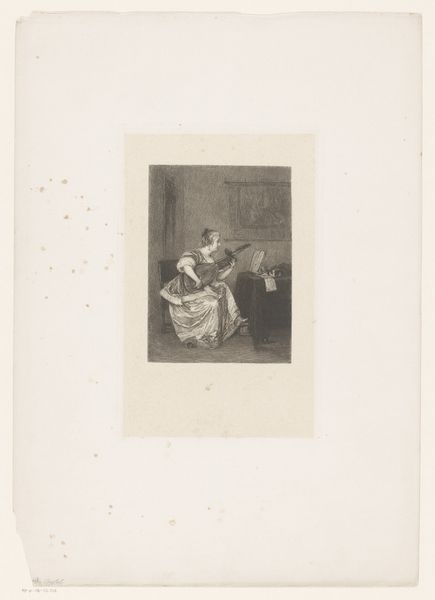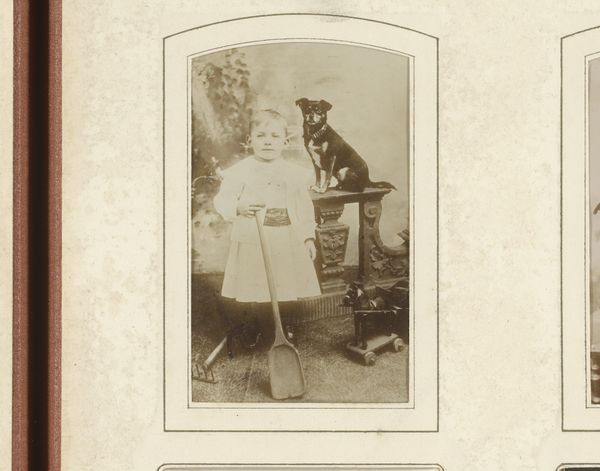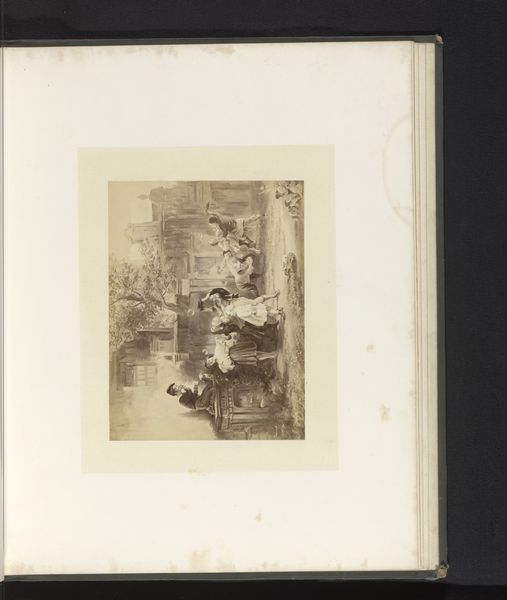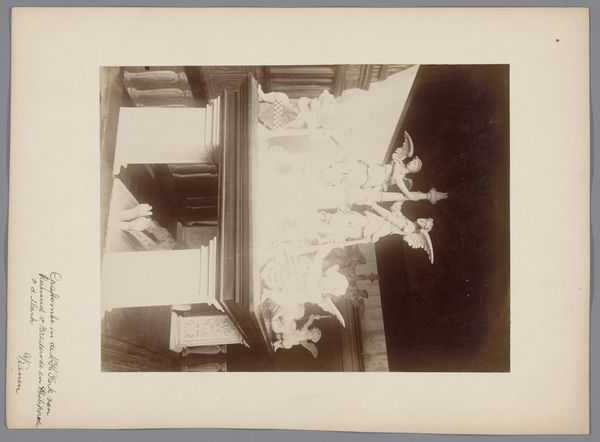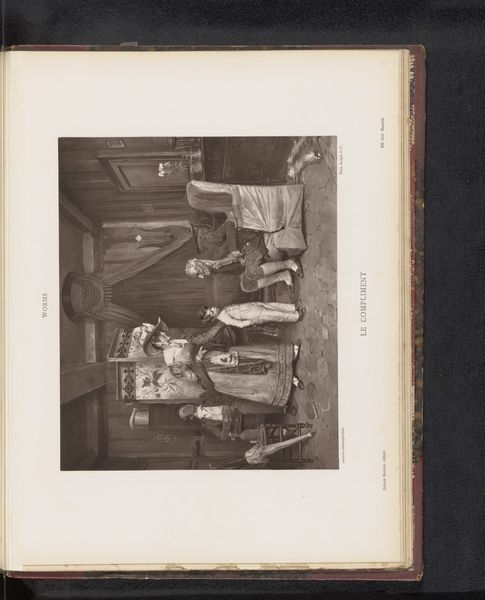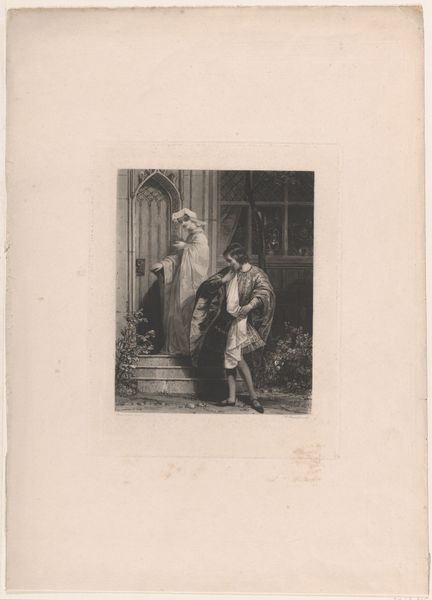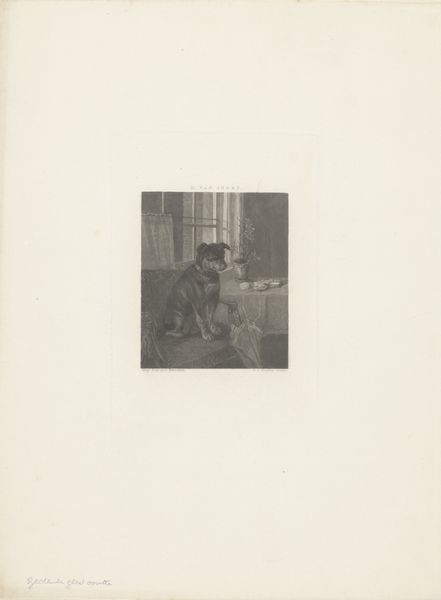
Napoleon Eugène Lodewijk Bonaparte op een pony voor een scherm Possibly 1868 - 1900
0:00
0:00
Dimensions: height 141 mm, width 115 mm
Copyright: Rijks Museum: Open Domain
Curator: This gelatin-silver print, tentatively dated between 1868 and 1900, is titled "Napoleon Eugène Lodewijk Bonaparte op een pony voor een scherm." The name translates to "The Prince Imperial on his pony in front of a screen." Editor: My immediate impression is one of awkward staging. The muted tones lend it an air of forced formality and vulnerability all at once. It has that Romanticized melancholy of late 19th century photography. Curator: The composition is indeed quite deliberate. The stark backdrop creates a sense of isolation. Note how the figure of the young Bonaparte, rigidly posed, contrasts with the surrounding architecture and staff that suggest elements of the gilded cage, a symbolic mise-en-scène characteristic of royal portraiture. Editor: Absolutely. The photo itself becomes a testament to constructed masculinity and colonial power, here represented in miniature. Consider how the imposed attire and saddle apparatus of the boy are an outward demonstration of the boy’s gender that speaks to the long legacy of historical and political events to come for this young ruler. The lack of joy on the boy’s face says a lot. Curator: We see a strong study in contrasts as a central formal feature: youth versus established power, innocence versus inherited burden. The almost clinical greyscale reduces color to a minimum, intensifying focus on textures. The framing in such a way allows one to extract deeper meaning to semiotically represent a staged innocence on a foundation of the grandiosity and decadence. Editor: It definitely challenges our contemporary understanding of childhood and power structures. Is this a simple portrait, or a carefully crafted political statement? It leaves us pondering the burdens imposed upon young lives within systems of privilege. And it invites us to look beyond a straightforward aesthetic reading and towards its implications on questions of gender, power, and representation. Curator: Precisely. An intense play of societal imposition staged on the blank canvas of youth. Editor: Agreed. What initially reads as a simple picture provokes a potent array of historical considerations.
Comments
No comments
Be the first to comment and join the conversation on the ultimate creative platform.
